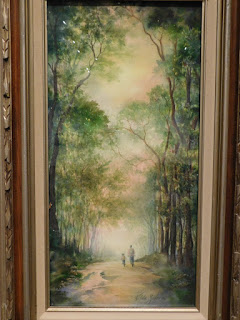Dazzling Liszt and Rossini Treasures, and a Luminous Berwald Gem
By Tom Wachunas
The March 25
program by the Canton Symphony Orchestra, titled “Beethoven and His
Contemporaries,” began with the Overture
and Turkish March, the most often
performed sections from the incidental music that Beethoven composed in 1811
for a play called Die Ruinen Von Athen
(The Ruins of Athens). Absent from
the music is the darker expressivity of strings we hear in many of the
composer’s later works. Instead, the wind instruments, particularly the wistful
and sprightly oboe soloing in the overture themes, are the reigning voices. The
ensemble was equally vivacious in its playing of the familiar Turkish March, evoking a palpable air of
adventure.
It is that same
venturesome energy that reigned throughout the riveting performance of Franz
Berwald’s Symphony No. 3 in C Major, Sinfonie
singuliére, composed in 1845. This
work, like the remaining two on the program – Liszt’s Les Préludes (1848) and Rossini’s Overture To William Tell (1829)
- was composed after Beethoven’s death. Singular indeed, with three
movements rather than the traditional four, Berwald’s lavishly Romantic
masterpiece seems to have taken a cue from Beethoven’s organic style of creating
an atmosphere via “tone painting,” and had all the feel of a slowly unfolding
journey. Amidst constant thematic ebbs and flows, there is the equipoise of
Beethovian stϋrm und drang and
poignant contemplation. The playfulness between strings and woodwinds is a
remarkable display of Berwald’s unarguable giftedness as both orchestrator and
arranger.
So it is surprising
that this symphony – a personal favorite of Maestro Gerhard Zimmermann, as he
explained in his introductory comments – is so rarely performed live. A man on
a mission, Zimmermann was determined to show us that his passion for this
oft-neglected work was not misplaced. The orchestra responded in kind. Brilliant
in its detailed articulation of intricate colors and textures throughout, the
ensemble was particularly gripping and fearless during the finale – a grand,
outward spiraling of jubilant lyricism that clearly elated the audience.
The second half of
the evening was even more exciting, beginning with Liszt’s famous symphonic
poem, Les Préludes. Zimmermann was
further relishing his role of raconteur as he introduced the work with a story
of Beethoven’s meeting with an eleven year-old Franz Liszt. After the young
pianist played the first movement of Beethoven’s Piano Concerto No.1, the
Master was moved to say, “You go on ahead. You are one of the lucky ones! It
will be your destiny to bring joy and delight to many people and that is the
greatest happiness one can achieve".
As if taking that
prophetic declaration to heart, the orchestra proceeded to “go on ahead” and
dazzle us with an enchanting embodiment of Liszt’s orchestral poetry. Following
the lush “moods of spring and love,” as Liszt called the first section, and the
“storms of life” described in the second, the third section featured lilting
phrases passed from harp to the oboe, then on to the clarinet and flute. It was
a truly mesmerizing “peaceful idyll” that set the stage for the explosive,
militant finale. Herein was a protracted, very loud burst of triumphal brass, the
likes of which I’ve never heard from this ensemble, and one gratefully received
with a boisterous standing ovation.
An invigorated
Zimmermann the storyteller addressed the audience once more, now to remind us
that Beethoven was not blessed with a bubbly personality, much less a bevy of
real friends. Introducing Rossini’s Overture to William Tell, he related
Beethoven’s assessment of the Italian’s ouvre on the occasion of their meeting
in Vienna. While the ailing German stated that he was familiar with Rossini’s opera seria (serious opera) works, he
was apparently dismissive, saying, “…Opera seria is ill-suited to the Italians.
You do not know how to deal with real drama.” Ouch. This was no way to win
friends.
Had he lived just a
few more years, perhaps Beethoven would have appreciated just how serious
Rossini could be. As it is, this Rossini work ranks as his longest and most
sparkling achievement in the realm of operatic overtures. It has become a
practically universal meme for dawn, storm, bucolic peace, and martial heroism.
And who could forget its association with a certain masked equestrian avenger?
Here, the orchestra played with electrifying vigor. From the reverential
sweetness of cellos ushering in the sunrise and the swirling woodwinds and
strings calling forth the violent brassy storm, to that iconic English horn
announcing calm, and the unforgettable trumpet alarm and ensuing gallop, the
entire performance was a breathtaking exposition of orchestral virtuosity.
It was during the
second standing ovation on this evening that Beethoven’s words to Liszt took on
new relevance. We, the audience, were
the lucky ones, happy witnesses to the aural sublimity that is the Canton
Symphony Orchestra.


















